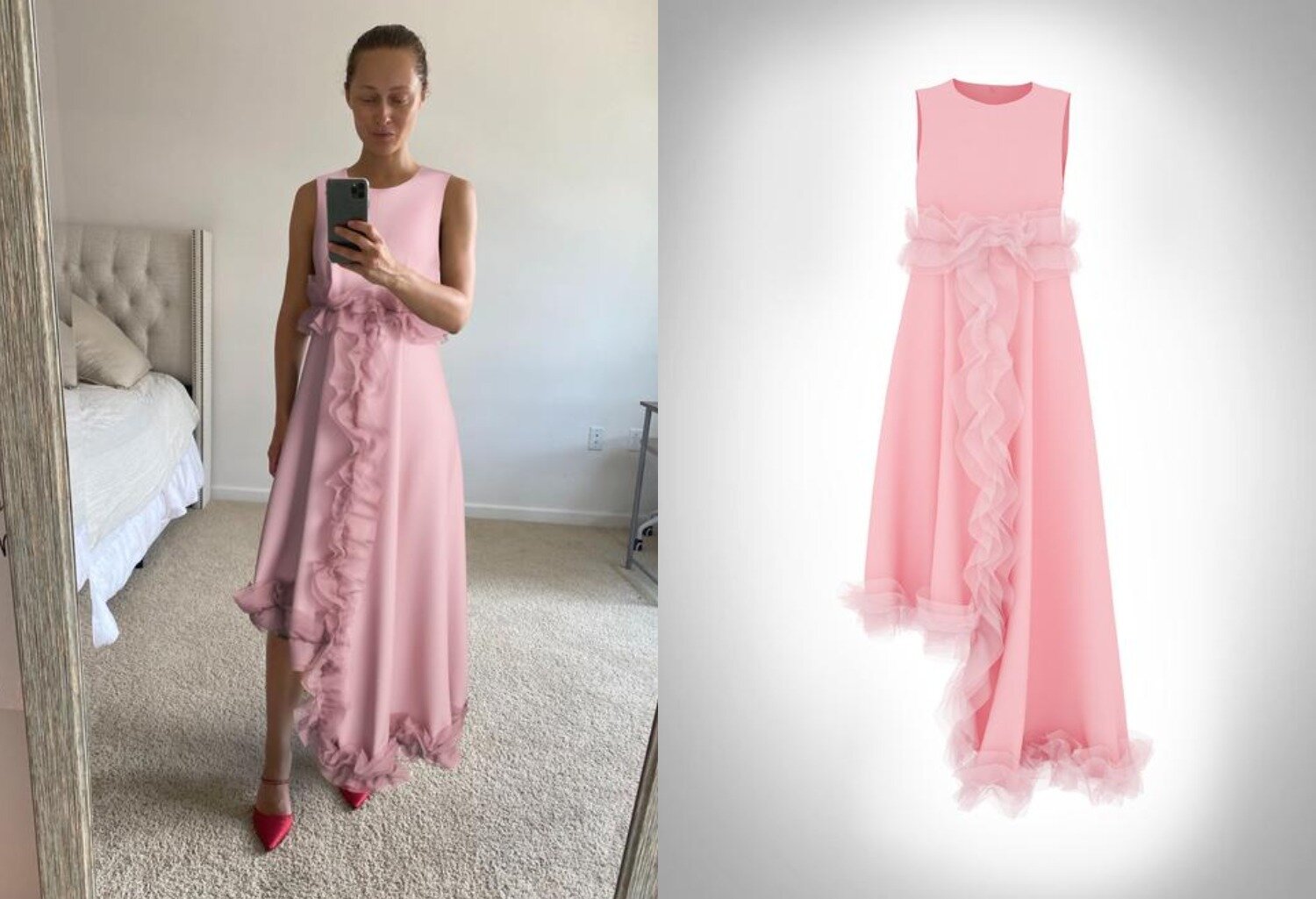In one of her photos on Instagram, Ukrainian private investor Julia Prysiazhniuk poses in a slinky sky-blue dress. The garment fits perfectly, though Prysiazhniuk never tried it on.
In fact, the dress, designed by Ukrainian fashion-tech startup Dress-X, doesn’t exist in the real world — it is a digital dress, which was tailored online and the woman can only wear it online.
Prysiazhniuk bought a digital garment because it is cheap, fancy and better for the environment than swanky, worn-just-once clothing that usually ends up in a landfill.
“It is interesting to see your picture in an unconventional dress — it is kind of a masterpiece,” Prysiazhniuk told the Kyiv Post.
The idea to create voguish but low-cost clothes that do not hurt the planet is central to Dress-X, a company launched earlier in August by Ukraine-born Daria Shapovalova and Natalia Modenova, who worked on grand fashion projects like Ukraine’s Fashion Tech Summit and Mercedes-Benz Kyiv Fashion Days.
Three years ago, Modenova and Shapovalova moved to Silicon Valley because they realized that high-tech fashion is the future. Although digital clothing will never replace the real thing, Shapovalova said, people in the fashion industry need it to create fresh content for social media or try on brand clothes for a lower price.
Modenova and Shapovalov launched their startup earlier in August and, within a week, the first orders came in.
Among Dress-X clients are models and social media influencers with large online audiences, including fashion entrepreneur Tatyana Kodzayeva, who has one million followers on Instagram, and Ukraine-born model Alina Baikova.
Costumers support the startup and are ready to buy more.
“I believe this is our future,” said Diana Ronsal, an Instagram influencer from Los Angeles.
The company’s long-term goal, according to its founders, is to sell a billion digital items that do not pollute the environment but look as real and as beautiful in photos as clothes from the shopping mall.
Digital fashion
With thousands of followers on Instagram, Modenova and Shapovalova know that social media is pushing digital fashion forward. They launched Dress-X for people who also have a “digital self” — a profile on social media platforms.
According to a survey, some people buy clothes just to showcase a new outfit on Instagram and then they return it or throw it away.
This damages the environment: Three out of five pieces of clothing produced globally end up in a landfill. The clothing industry is one of the largest carbon polluters on Earth: Producing a men’s white T-shirt emits nearly 6.5 kilograms of carbon dioxide into the atmosphere.
On the contrary, Dress-X produces no waste, the founders said.
All it takes to buy a digital dress is a high quality picture of a person — preferably, in slim fit clothes with no sleeves — and two-three days to digitally “tailor” the garment to the photo of the customer.
One such clothing item costs $30 on average, but the price depends on the fashion brand and the complexity of the process. For example, the futuristic yellow dress by renowned designer Alena Akhmadullina costs $120, while clothing items by the less-known brands can cost about $30.
“Before that, ordinary people could not afford digital clothes by luxury brands, but we made it affordable to everyone,” Modenova told the Kyiv Post.
Rethinking style
The Ukrainian-founded startup was the first to open its platform to unknown designers from all over the world. Some of them have never worked in the garment industry but want to design new clothes.
By moving to digital, 3D artists and fashion designers can avoid an expensive and labor-intensive manufacturing process, Shapovalova said, but they also have to rethink how they design the apparel. Digital clothing should be bright and captivating, not necessarily realistic, because it is not tailored to grant physical comfort, according to Dress-X.
Customers also like it when the outfit looks bizarre. Prysiazhniuk, for example, wants to try on a haute couture dress, but she can’t afford to buy one in real life.
“Not only because it is expensive,” she said, “you are just not a super celebrity.”
That is another advantage of digital clothes — “you can try on clothes you wouldn’t dare (to wear) in real life,” Modenova told the Kyiv Post.
Next fashion frontier
Although digital clothes haven’t yet become a buzzword in the fashion industry, the demand for such items is growing and new players — like Dress-X — are entering the field.
The first digital clothing collection by Norwegian retailer Carlings was released in 2018, but it was a year later, after Dutch startup Fabricant sold its digital dress for $9,500, when the new trend caught on.
The Ukrainian startup also wants to make a profit, but first it needs to reduce the production cost, Modenova said. She didn’t specify how much the company is currently spending on making a digital dress.
To develop its project further, Dress-X needs investments — to hire new specialists and improve technology. Shapovalova said that, for the Ukrainian market, digital fashion is still a new concept, but it’s gaining momentum in the U.S. and Europe, so foreign investors are ready to put their money in the industry.
Before the Ukrainians rolled out Dress-X, they worked on a chain of pop-up stores in Los Angeles, where people could rent clothes to take photos or videos for social media. With Dress-X, Shapovalova and Modenova just extended their experiment.
“We want to show that some clothes can exist only online,” they told the Kyiv Post.



